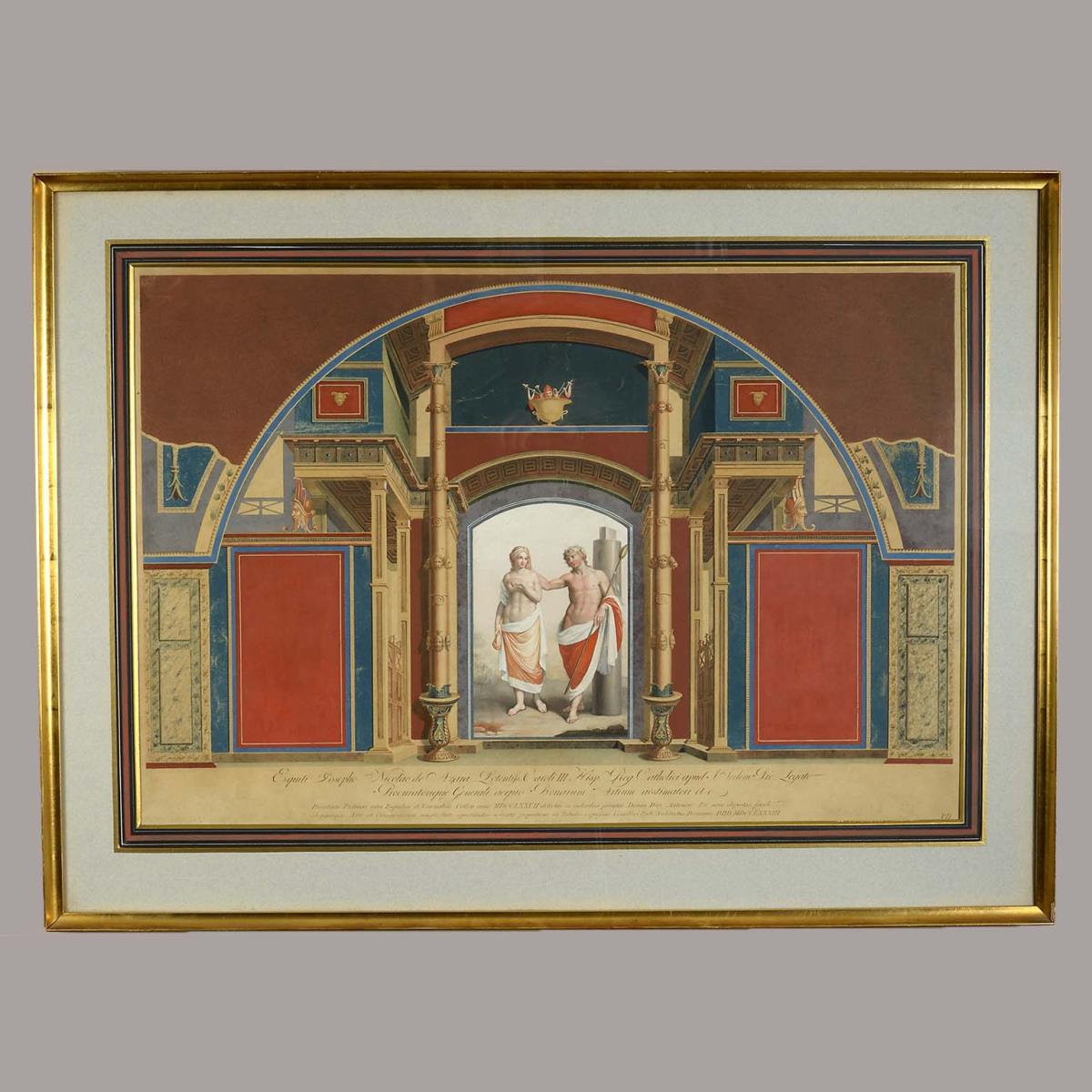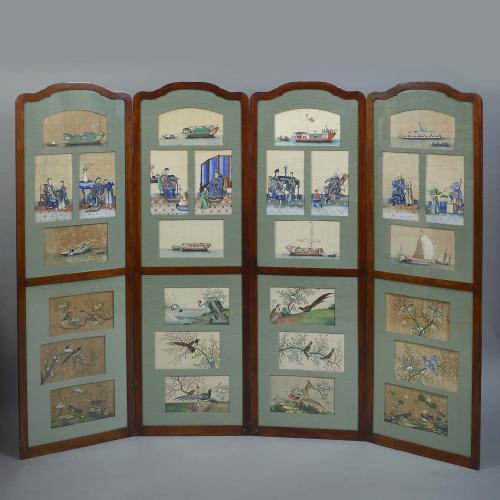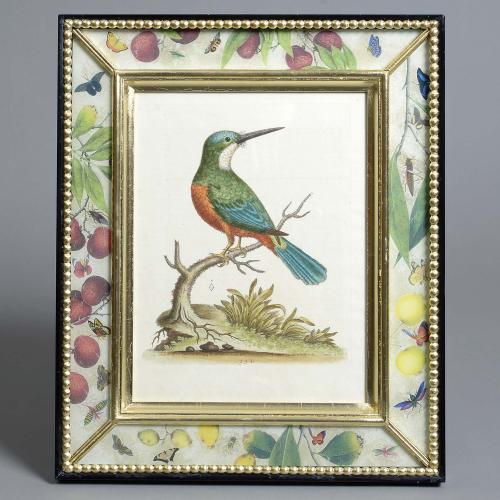

This object is eligible for a Certificate of BADA Provenance
The BADA Standard
- Since 1918, BADA has been the leading association for the antiques and fine art trade
- Members are elected for their knowledge, integrity and quality of stock
- Our clients are protected by BADA’s code of conduct
- Our dealers’ membership is reviewed and renewed annually
- Bada.org is a non-profit site: clients deal directly with members and they pay no hidden fees
A VILLA NEGRONI FRESCO
Engraving, watercolour and body colour.
Pl. VII Bacchus and Ariadne.
Artist Anton von Maron.
Engraved by Petrus Vitali.
Published by Camillo Buti
1778-1783
The discovery of Roman frescoes in a house in the grounds of the Villa Negroni on the Esquiline Hill in 1777 by Cavalier J.N. de Azara, Minister to Rome of King Carlos III of Spain, caused enormous excitement, the first decoration of its kind to be discovered in Rome since the excavations at Pompeii and Herculaneum.
King Carlos instructed his artist Anton Raphael Mengs (d.1790), the pre-eminent Roman artist of the day, to copy the frescoes for publication by the architect Camillo Buti. He specified that the copies should be made ‘With the most scrupulous exactness…so that one can form an idea of the taste of the ancients in this type of mixed ornamental and figural painting’. Plans, descriptions of the ‘antique rooms’ and an announcement of the first two of Angelo Campanella’s hand-coloured engravings of the ‘Arabische’ frecoes featured in the first part of Buti’s 1778 Manifesto. Anton Raphael Mengs completed the first three paintings, the remainder were executed by his brother-in-law Anton von Maron, the twelfth plate not being published until 1802.
The engravings were hugely influential at the time of their publication. In 1778 the connoisseur Frederick Augustus Hervey, 4th Earl of Bristol, contemplated the building of a villa ‘Tusculum’ inspired by the Villa Negroni, he consulted the architect Sir John Soane, then in Rome, who purchased some of the Buti plates which were to influence the architecture of his own London house in Lincoln’s Inn Fields. Soane acquired the first eight plates for £2.8.0 at Christie’s sale of 1st May 1796 and displayed them in his Library/Breakfast Parlour, these were illustrated in an engraving of 1813. Catherine The Great had been so delighted with two paintings after the frescoes sent to her from Rome that she decided to re-decorate an entire room in this manner. In 1788-89 the central figural panels from the first eight plates were used in the decoration of the Silver Cabinet in the
Known examples of the plates can be found in the following important collections; Staatliche Museum, Berlin; Deutsches Archaologisches Institut, British School at Rome, Museo di Roma, Rome; British Museum, Sir John Soane Museum, V&A Museum, Royal Collection, London; Ickworth Rotunda, Suffolk.
There are copies of the Camillo Buti Manifesto in the British Library, Department of Manuscripts, Add. MS 35378, fols.316-7, and the V&A Museum, Department of Paintings, Tatham Album, p.D.1479-’98.
The engravings are discussed at great length in an article by Hetty Joyce, The Ancient Frescoes from the Villa Negroni and Their Influence in the Eighteenth and Nineteenth Centuries, in the Art Bulletin, Sept. 1983, pp. 423-40.
The BADA Standard
- Since 1918, BADA has been the leading association for the antiques and fine art trade
- Members are elected for their knowledge, integrity and quality of stock
- Our clients are protected by BADA’s code of conduct
- Our dealers’ membership is reviewed and renewed annually
- Bada.org is a non-profit site: clients deal directly with members and they pay no hidden fees



